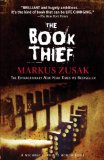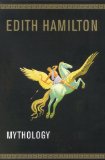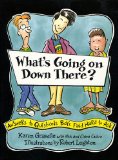Once your child can read Harry Potter, the entire universe of books opens up, but what is age appropriate? I have handed my oldest books that were Newbery Award winners, on the thin side, and with decent size type only to find them a tad too old for her based on content. I have a tendency to steer what I call “Grapes of Wrath” realism to middle school; I think these books are fine for 4th or 5th grade as a classroom assignment because the teacher provides context, but reading for pleasure should be … a pleasure. Another reason why some of these books are on this list is that, as historical novels, it will be a much richer experience to read them while learning about that period of time in history class. But, as always, it’s just a personal call. I have used the Boston Public Library’s book list as a guide. As always, if you want to purchase a book, just click on the image and you will be transported to Amazon.com.
My original list was quite sparse simply because I’m backlogged with books for grades 3-5. In a testimony to the power of texting, my Mother’s Helper Extraordinaire (and straight A student) texted her Straight A Student Friends for help compiling: 20 Books I have Read in Middle School and Enjoyed. She said that she was shocked to get the list completed in 10 minutes. I will read these books eventually, but they have MHE after it to indicate it’s a recommendation from my 8th grader Mother’s Helper Extraordinaire (MHE). And who knew we read some of the same adult books?!
The Door in the Wall by Marguerite de Angeli. This Newbery Award winner author was born over two hundred years ago, yet her novel, set in Medieval England, is an enduring tale of a son of a knight who becomes a hero despite being crippled and discovers that there is more than one way to serve the king. Her book makes the medieval times come alive. I consider this as historical fiction. [ages 11-15]

Tuck Everlasting by Natalie Babbitt. MHE.

The Boy in the Striped Pajamas by John Boyne. MHE.

Deception Point by Dan Brown. MHE.

The Tequila Worm by Viola Canales.

Al Capone Does My Shirts by Gennifer Choldenko. I consider this as historical fiction. [ages 11-15]

The Year of Impossible Goodbyes by Sook Nyul Choi. A mom friend met the author at an event at the Boston Public Library and really enjoyed meeting her and hearing about her background. She bought this book for her son, a 4th grader. He didn’t finish the book; it’s better for a slightly older age. I consider this as historical fiction. [ages 11-15]
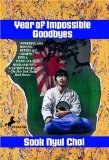
Walk Two Moons by Sharon Creen. MHE.

No Small Thing by Natale Ghent. MHE.

Piper by Natalie Ghent. MHE.

A Raisin in the Sun by Lorraine Hansberry. MHE.

Kira-Kira by Cynthia Kadohata. I am a big fan of Cynthia Kadohata so I gave this book to my daughter to read when she was 8-years-old. Another friend of her’s also read this at the same age. It wasn’t that long, the print wasn’t mouse-sized, and it won a Newbery Medal. Right? Wrong! In retrospect, I should have read the book first. It’s a story about a Japanese family forced to relocate during WWII, a particularly sensitive subject for me because my mom was forced to relocated during the war. It has a Grapes of Wrath realism that would be better served for a middle schooler, and it would be a richer experience coupled with learning WWII-era U.S. history. I consider this as historical fiction. [ages 11-15]

Can You Keep a Secret? by Sophie Kinsella. MHE. I did read this book also, and I thought it was a cute love story from the author of the Shopaholic Series. I personally wouldn’t have guessed that an middle-schooler would like this because I think of this as Chick Lit. But, to my earlier point, there is not a line between young adult and adult fiction, truly. This is an enjoyable read on the beach. I probably would not hand this book to my 8th grader but if she found it on her own I wouldn’t stop her. MHE’s friends also recommended Remember Me? also by Sophie Kinsella. I have to say I bought this book to read on a long plane ride and gave up. It’s not as interesting a story so I’m giving a fair warning.

The View from Saturday by E. L. Konisburg. This might be Konisburg’s finest work, which is saying a lot given her two Newbery Medals! This tightly woven story tells the story of four members of Mrs. Oliniski’s 6th grade Academic Bowl team and their unlikely state middle school championship, but also weaves together short story about each of the students reminding us that there is only two degrees of separation between kindness and love.

The Giver by Lois Lowry. MHE.

Every Soul a Star by Wendy Mass. MHE.

The Hunt for Atlantis by Andy McDermott. MHE.

The Host by Stephenie Meyer. MHE.

Beowolf: A New Telling by Robert Nye. MHE. She notes, “Not as bad as orginal but pretty graphic.”

Maximum Ride series by James Patterson. MHE.


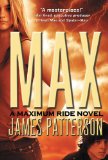

The Lightening Thief by Rick Riodan. This is “Harry Potter meets Greek Mythology” and it’s a fantastic read! It’s such a page-turner that I stayed up to 2 a.m. to finish it! This is a MUST READ before the movie comes out!
Percy Jackson is an ADD, dyslexic 6th grade hero who has trouble staying in school because, as it turns out, he’s no ordinary human but a half-blood related to one of the big three in Greek Mythology. He must find and return Zeus’ lost lightening bolt to prevent WWIII. This series makes Greek Mythology come alive so I’ve included a Greek Mythology book as well. The level of difficulty is slightly easier than Book 1 of Harry Potter; this book is 375 pages long, normal sized type. [ages 8-14]



 (boxed set of first three books, $11.69)
(boxed set of first three books, $11.69)


 (boxed set of all 5 books, $51.97)
(boxed set of all 5 books, $51.97)
Holes by Louis Sachar. The Boston Public Library places this book under Middle School, but it’s also worked successfully as a book club book for boys in 3rd grade.

Smiles to Go by Jerry Spinelli. Will Tuppence, a tightly-wound freshman in high school, learns about love and letting go after a family tragedy. [ages 11-16]
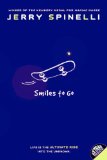
The Mysterious Benedict Society series by Trenton Lee Stewert. MHE.



The Land by Mildred D. Taylor. MHE.

Uglies series by Scott Westerfeld. MHE.



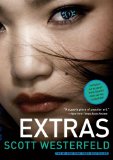
The Book Thief by Marcus Zusak. The moms in my book club swooned over this book. They were reading it for their mother/daughter book club and highly recommended this book. We almost picked it for our adult book club.
